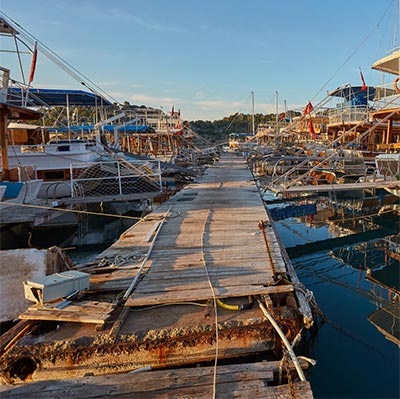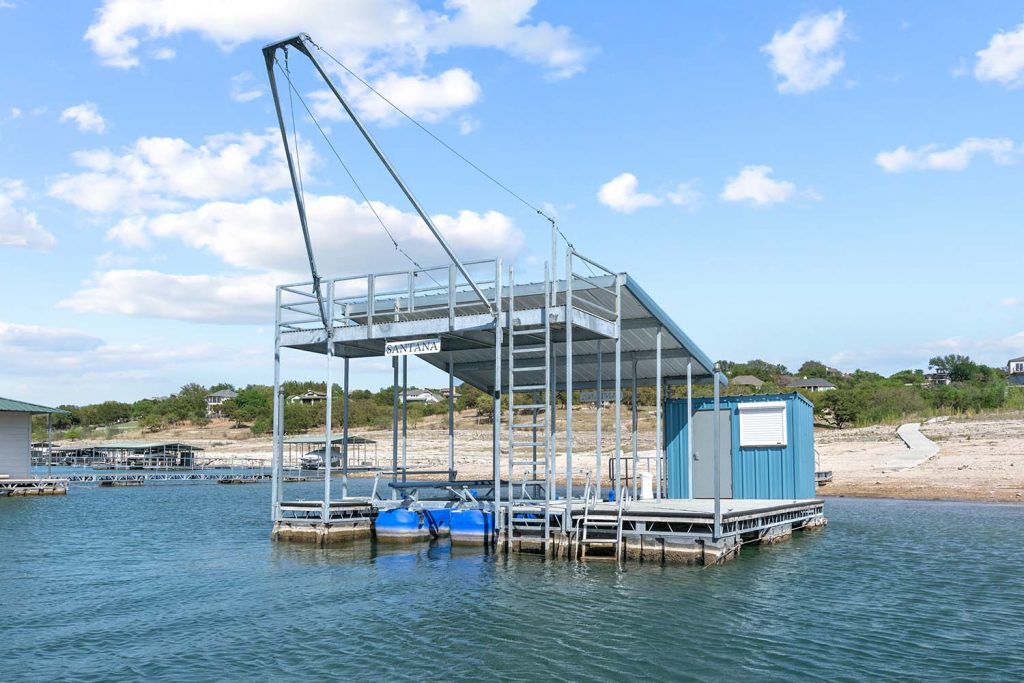Professional Insights on Lasting Dock Repairs Solutions
Professional Insights on Lasting Dock Repairs Solutions
Blog Article
Just How to Address Common Dock Repair Service Issues for Safe Water Tasks

Identifying Common Dock Issues
Recognizing common dock issues is essential for maintaining the capability and security of your waterfront property. Normal evaluations can help discover problems prior to they become serious, making certain both the long life of the dock and the security of those that use it.
One more common issue is the degradation of flotation tools. These devices are important for maintaining the dock resilient, and any kind of damage or leaks can create the dock to list or sink. Regularly looking for leakages or waterlogged floats can preempt extra considerable issues.
Furthermore, algae and barnacle accumulation on the dock's surface can develop slippery and unsafe problems. This biofouling not only positions a threat to users but can likewise speed up the deterioration of the dock materials.
Finally, checking for signs of corrosion on steel parts is crucial. Rust can jeopardize the stability of the dock's structure, making it harmful. By regularly determining these typical dock concerns, you can make sure that your dock remains practical and secure for many years ahead.
Fixing Rotting Timber
When resolving the issue of rotting wood on your dock, it is crucial to act quickly to avoid more deterioration. Begin by completely evaluating the whole framework to recognize all impacted areas. Utilize a screwdriver to probe the wood; if it sinks in easily, the wood is most likely deteriorated and requires immediate interest.
Once identified, remove the deteriorated sections using a saw or carve. Be certain to reduce to healthy and balanced, solid wood, ensuring you remove all compromised product. After removal, treat the remaining timber with a timber chemical to protect against future rot. This therapy will help protect versus wetness, which is the primary root cause of timber decay.
Next, replace the removed sections with marine-grade lumber or pressure-treated timber, which are a lot more resistant to water damages. Secure the brand-new pieces with galvanized or stainless-steel bolts to stop rust. In addition, applying a waterproof sealer to the new timber can provide an added layer of protection.
Safeguarding Loose Boards
Just how do you ensure your dock stays practical and safe for all its customers? One crucial facet is protecting loosened boards, which can otherwise present significant dangers. Loosened boards not just increase the risk of stumbling yet can also jeopardize the structural honesty of the entire dock.

For reinstallation, make use of galvanized or stainless steel screws, as these materials supply remarkable resistance to corrosion in marine settings. Make sure the screws are long enough to penetrate deep into the underlying assistance framework, but not so lengthy that they stick out via the dock's surface. Pre-drilling pilot holes can assist stop the timber from splitting.
Lastly, keep a routine evaluation routine to identify and attend to any brand-new concerns quickly. By securing loosened boards efficiently, you contribute to the total security and longevity of your dock, making it a reliable platform for water tasks.
Stabilizing Unstable Pilings
Guaranteeing the security of unstable pilings is paramount to preserving a practical and secure dock. Unsteady pilings can jeopardize the whole framework, posing considerable threats to users and potentially causing costly repair services. The initial step in stabilizing these necessary parts is an extensive inspection. Check out the pilings for signs of rot, damage, or moving. Use a degree to look for upright alignment and ensure they are driven deep enough into the substratum to give sufficient assistance.
If the pilings are located to be unpredictable, one reliable method for reinforcement is making use of extra supporting. Cross-bracing with treated lumber or galvanized metal can substantially boost stability. Anchor the braces securely to both the pilings and the dock frame to disperse loads evenly.

Normal maintenance and routine reassessment of the pilings' security are critical to making certain long-lasting dock safety and functionality.
Changing Rusty Hardware
Resolving unsteady pilings is just one aspect of preserving a dock's integrity; one more essential issue is changing rustic equipment. In time, direct exposure to dampness and salt can result in the oxidation and deterioration of brackets, screws, and screws, jeopardizing the whole structure's security. Routine inspection for rust is important, particularly after extreme weather condition or her latest blog seasonal adjustments.
When corroded hardware is identified, instant action is called for. Begin by selecting marine-grade stainless steel or galvanized equipment, both developed to stand up to the rough marine setting. Ensure that you have the suitable read this tools, such as wrenches and screwdrivers, to securely get rid of the old, rusty pieces without causing more damages to the dock.
After removing the rusty hardware, extensively tidy the influenced areas to eliminate any type of recurring corrosion or particles. Use a rust-inhibiting guide to exposed metal surfaces before mounting the new hardware. Tighten up all components securely to protect against future loosening, and periodically inspect the installations to make certain ongoing stability.
Changing corroded equipment not only extends the dock's lifespan but also dramatically enhances the safety of water tasks. By proactively taking care of rust, you shield both the structure and its users, ensuring a safe and pleasurable waterfront experience.
Conclusion
Regular evaluations and maintenance are necessary to address usual dock repair work issues and ensure secure water tasks. By determining and correcting issues such as rotting timber, loosened boards, unsteady pilings, and rusty equipment, architectural stability and longevity can be click for more info significantly boosted. The application of marine-grade products and suitable therapies better fortifies the dock versus ecological stressors. Such aggressive procedures contribute to the overall safety and performance of dock structures, cultivating a safe atmosphere for water-based tasks.
Making sure the safety and security of water activities hinges considerably on the correct upkeep and repair work of anchors (Dock Repairs). These devices are essential for keeping the dock resilient, and any kind of damages or punctures can trigger the dock to checklist or sink. By routinely determining these usual dock problems, you can make sure that your dock continues to be practical and safe for years to come
Ensuring the stability of unstable pilings is critical to preserving a useful and safe dock.Regular evaluations and maintenance are essential to deal with typical dock repair service problems and make certain safe water tasks.
Report this page